
Byrds legend and folk hero Roger McGuinn. Pic: John Chiasson
The legendary guitarist-songwriter discusses his new album, his days in The Byrds and why he prefers writing with a partner
![]() long with the likes of The Beatles, The Rolling Stones, The Beach Boys and The Kinks, The Byrds were one of the most influential groups of the 60s. Starting out as peddlers of Dylan-esque folk-rock, a career that spanned just nine years saw them whole-heartedly embrace psychedelia and then, as the 60s turned into the 70s, pioneering the country-rock sound.
long with the likes of The Beatles, The Rolling Stones, The Beach Boys and The Kinks, The Byrds were one of the most influential groups of the 60s. Starting out as peddlers of Dylan-esque folk-rock, a career that spanned just nine years saw them whole-heartedly embrace psychedelia and then, as the 60s turned into the 70s, pioneering the country-rock sound.
Hits like Mr Tambourine Man and Eight Miles High saw the band achieve huge commercial success in the mid-60s, yet they were never really suited to being teen-scream sensations. In later years, their experiments in country music would alienate them from the prevailing ‘counter-culture’, while the ultra-conservative Nashville old guard remained unimpressed, and the hits dried up. Nevertheless, the ‘jingle-jangle’ sound of main man Roger (formerly Jim – he changed his name in 1967, having become a follower of the Subud spiritual movement) McGuinn’s 12-string Rickenbacker guitar would go on to influence countless artists, ensuring The Byrds’ place in the pantheon of rock greats.
After The Byrds finally disbanded – after numerous line-up changes – in 1973, McGuinn recorded a series of solo albums and toured with Tom Petty and Bob Dylan. But the dawn of the internet era would see him re-emerge as a standard-bearer for traditional American music with the launch of his Folk Den project, in which he releases recordings of traditional songs for free online.
But more about the Folk Den in part two… in this first part of our interview, Roger discusses his latest project Stories, Songs And Friends, his days in The Byrds and his songwriting techniques…
You’re touring the UK in September to promote your new album. Tell us about that…
“Okay, so Stories, Songs & Friends is my latest release, and it’s a live, two-CD set with a bonus DVD that has interviews with some of my friends. It’s kind of an autobiography, it tells the story of how I got into music and all the people I met along the way.
“It started out as a recording for my mother’s 102nd birthday. I was playing in Tucson and I went along to see her for her birthday because she’d broken her hip, and she was bedridden. So we recorded the concert with very high-quality equipment, so that she could hear it – that was the primary reason for the recording. And she lived to be 102 and three days, and then she passed away. But I listened to the recording, and thought it was worthy of releasing. And then we had this DVD project that we were working on separately, but decided to include that in the package.
“It’s some concert footage, but mostly anecdotes from people that have known me from hanging out and being musicians together – people like Tom Petty and Bruce Springsteen. I didn’t know Bruce Springsteen knew who I was! But it turned out he’d followed me since Mr Tambourine Man and had even done some of my songs on stage. He likes to include some obscure material in his concerts, and he’s done some of my stuff over the years.
“It all fell together pretty naturally, it wasn’t a contrived thing. It wasn’t like, let’s put together a concert CD with a bonus DVD, it didn’t happen like that.”
You’re cited as an influence by a lot of bands, yet Byrds albums didn’t always sell that well at the time…
“Yeah, but it actually feels kind of nice to have it work that way. A good example of that is Sweetheart Of The Rodeo, which was a disaster commerically – nobody bought it when it first came out, but over the years it’s risen up the ranks of the Byrds albums to be the more popular one. So it’s nice to be appreciated.”
“I think in my case at least, collaborating is a better way to write songs”
Most of The Byrds’ songs were co-writes. What can you tell us about how that worked?
“Back in the Byrds days I usually did write with someone else, either David Crosby or Gene Clark or Chris Hillman, and then later with Jacques Levy. I always enjoyed the process of writing with a partner; even today I write songs with my wife, Camilla. I think two heads are better than one when it comes to songwriting. If you look at the great songwriting teams, you’ve got George & Ira Gershwin, Lieber & Stoller… all the songwriting teams, they’ve done very well. I think of Lennon & McCartney: they’ve written some really interesting songs that probably neither would have written by himself. So I think the interplay between two people is really good.
“I wrote first with Gene Clark, then with Gene Clark and Chris Hillman, then all five Byrds wrote some things. I wrote a few things by myself, like Mr Spaceman, but I wouldn’t call them the best songs. Even The Ballad of Easy Rider was a collaboration with Dylan, so I think in my case at least, collaborating is probably a better way to write songs.”

Pic: John Chiasson
So who would do what, when you were co-writing with the other Byrds?
“Well, it depends what they do. Gene Clark was a guitar player. Jacques Levy couldn’t play any instruments but he was kind of musical, he could hum out a tune for you. But I came up with most of the tunes and he came up with most of the lyrics, when we wrote together. With Gene, it was pretty even, where he and I would work on the tune and the lyrics together.
“For example with Eight Miles High, we had this idea to write a song about an airplane ride, which was how we got to the ‘high’ part… which of course was misinterpreted by the radio community, who thought it was talking about drugs. But it really wasn’t, it was about an airplane ride!
“Songwriting is a lot more perspiration than inspiration!”
“We wouldn’t really write at a session, because studio time was so expensive. Usually the writing would take place at someone’s house, either my house or the other guy’s house. We’d sit down at a table and chairs with a legal pad and start working on it. And you know, it definitely is work, it’s a lot more perspiration than inspiration! Once in a while you get a tune that’s pretty fully formed, like you wake up having heard it in a dream or something, but that’s only happened once in a while to me. An example of that would be the song Tiffany Queen: I dreamed that song and went in and recorded it the next day. I can’t think of any others.”
So where does inspiration come from, when it does come?
“Well like I said, it’s hard work! You sit down like a prose writer and you decide to write, and then you try to think of something. In my case, I’d usually come up with a series of chords that I liked together, and then hum a melody over that, until it suggested something like an idea for a song. Other times, you’d have an idea for a song and then make up a tune for it. But I think the chords and the melody coming first is more common in my case.
“The most recent song I’ve written hasn’t been recorded yet, it’s called The Grapes Of Wrath and it’s based on the 1951 movie with Henry Fonda. I came up with the chord changes first for that one, and then a melody to go over the chord changes, and then gradually my wife and I sat down and wrote a lyric based on the movie, with ideas from scenes in the movie.
“That’s my method, other people can do it different ways. With Dylan, I remember he’d sit down at a typewriter and write out the lyrics, I don’t know if he even had a tune in mind at the time. He’d write out poems and later put a tune to them.”
Are there any songs you’ve written lyric-first?
“Not really… I can’t think of any right now anyway. I’ve had some where the tune and the lyrics came along simultaneously, like Mr Spaceman, where I just had the whole idea and decided to put it together on the spot, and because I was playing and singing at the same time, coming up with the lyrics, it all happened at once.”
“Not every song you write is gonna be great, so writing a lot of songs is the way to go”
Do you have a preferred time or place to write?
“It’s nice to be quiet, to have a quiet environment where there aren’t too many distractions going on. Camilla and I used to have a condo on the beach and we’d go to that, sit down for a couple of weeks and write songs, and usually come out with several that we liked. You can find examples of those songs on a CD called Limited Edition, which you can get on Amazon.
“Like I said, it’s work – it doesn’t just come out nowhere, you really have to decide to do it. And not every song you write is gonna be great, so writing a lot of songs is the way to go.”
So does that mean you’ve got hundreds of unrecorded songs sitting in a file somewhere?
“There are some … I’ve got one called Catching Rainbows that hasn’t been recorded. There’s a group called Starbird that was sort of an online aggregation, they all live in different places and they collaborate over the internet. They attempted to record that song but I don’t think they’ve released it.”
Looking back over your years in music… with the benefit of hindsight, are there things you’d have done differently?
“Are there things I’d have done differently? Of course! I probably wouldn’t have done all the drugs, for one thing – they give you the illusion that you’re doing better than you are, and that’s not good. I didn’t do a lot of drugs, I didn’t get hung up on heroin or anything like that. But I did my share of pot and pills and all that, and I didn’t really need to.”
Interview: Russell Deeks
Part two of this interview – in which Roger discusses his Folk Den project, his love of modern recording technology and his earliest days as a Brill Building songwriter – features in the first digital edition of Songwriting Magazine
In the meantime, Stories, Songs And Friends is out now, and Roger will be touring the UK and Europe in September, October and November to promote it. For a full list of dates, see his official website. Below, you can watch The Byrds performing Mr Tambourine Man on the Ed Sullivan Show in 1965.



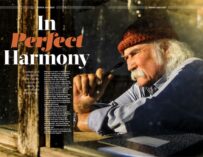
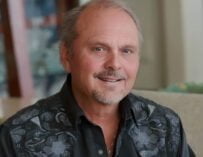
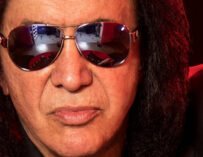
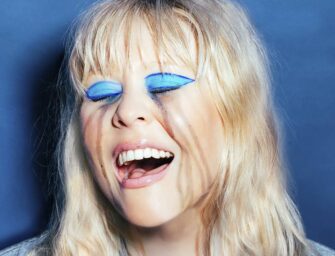

















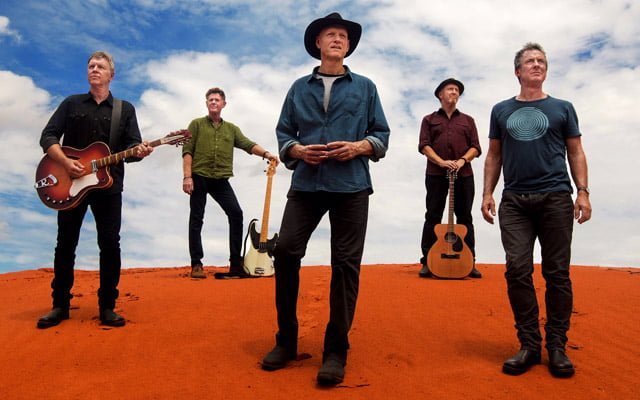



Related Articles